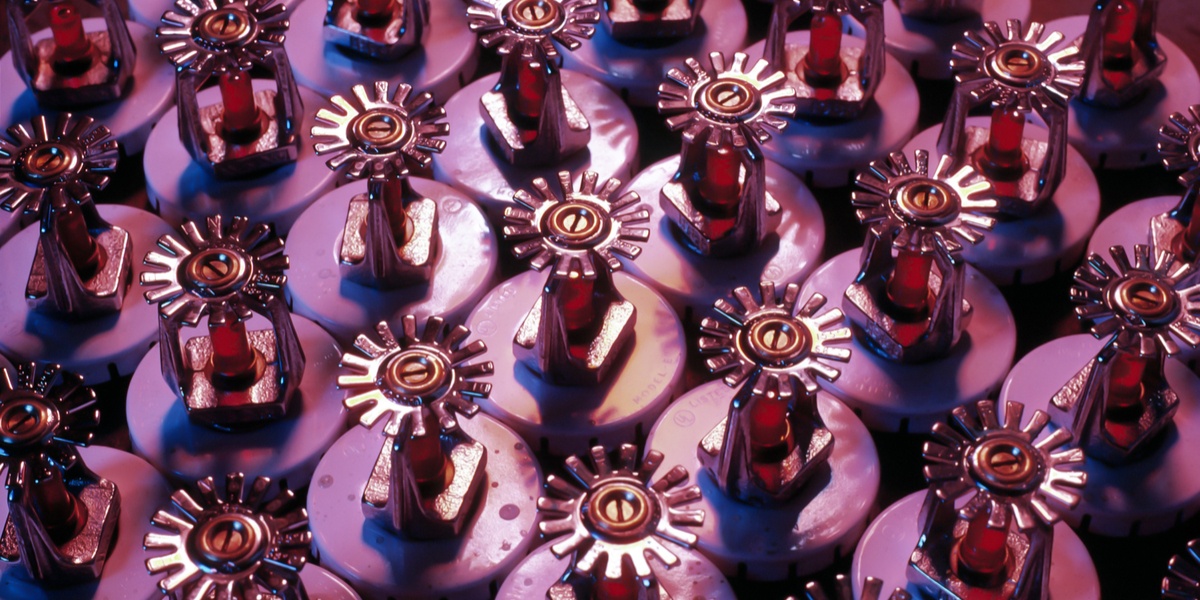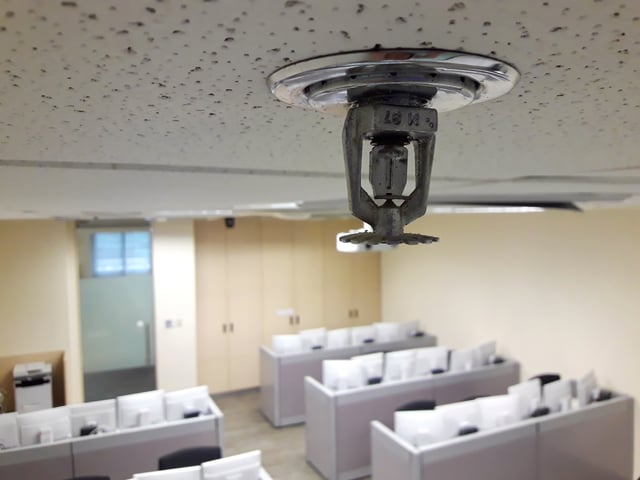Is There an NYC Sprinkler Code?

Property management companies and engineering firms in NYC will work with plenty of fire sprinkler systems in 2018. This is because Local Law 26 of 2004 demands them for all business occupancies at least 100 feet tall, including high-rise office buildings, and the deadline to have a functional and approved sprinkler system is July 1, 2019. Since the NYC Department of Buildings publishes construction codes for all types of building systems, perhaps you may be wondering if there is an NYC Sprinkler Code as well? The document does not exist as such, but automatic fire sprinklers must meet requirements from several local and national codes to be approved for use in New York City.
There are two types of compliance when working with automatic sprinkler systems: having an installation that meets codes, and working with professionals who are licensed in NYC. Only a Registered Design Professional (RDP) can get the sprinkler system design approved with the Department of Buildings, and only a Licensed Master Plumber (LMP) or Licensed Fire Suppression Contractor (LFSC) can get a work permit and proceed with the installation.
Do you need an automatic sprinkler system design?
Large property owners are under the most pressure to meet Local Law 26, since July 2019 is a tight deadline for a large fire sprinkler system. However, following the established procedure at all times is strongly advised. Even if a fire sprinkler installation meets all the technical requirements from applicable codes, it is against the law to proceed without an approved design and a work permit.
This article will provide an overview of the main requirements for NYC sprinkler systems. There is no NYC Sprinkler Code per se, but there are many technical specifications to meet from several codes - what follows is a brief overview. It is important to note that Local Law 26 of 2004 is not a standard for sprinkler installation, but rather a law that that aims to make NYC buildings more resistant to fire, published in response to the 9/11 incident.
NFPA Requirements for Automatic Fire Sprinklers
The National Fire Protection Association (NFPA) is the industry authority in all aspects of fire protection engineering in the USA, and their standards are also recognized and applied internationally. There are over 300 NFPA codes covering various aspects of fire protection, but the following are the most relevant for automatic sprinkler systems:
- NFPA 13: Standard for the Installation of Sprinkler Systems
- NFPA 13D: Standard of the Installation of Sprinkler Systems in One- and Two-Family Dwellings and Manufactured Homes
- NFPA 13R: Standard of the Installation of Sprinkler Systems in Low-Rise Residential Occupancies
- NFPA 25: Standard for the Inspection, Testing and Maintenance of Water-Based Fire Protection Systems
The NFPA 13 standard starts by providing definitions of the main technical concepts used when working with automatic fire sprinklers. The code then proceeds with design and installation requirements, finally addressing special applications. NFPA 13D and 13R are less demanding versions for residential sprinkler systems.

When working with NFPA standards, it is important to note that the NYC Department of Buildings has introduced amendments for New York City. To have a code compliant sprinkler system, it is important to consider both the original NFPA 13 and its amendments. Note that these amendments not only affect automatic fire sprinklers (NFPA 13, 13D and 13R), but also standpipes (NFPA 14), fire pumps (NFPA 20) and fire alarms (NFPA 72). All these amendments are explained in detail in Appendix Q of the NYC Building Code.
NFPA standards and their amendments are the main reference to design automatic sprinkler systems and other fire protection measures in NYC. However, note that there are additional code requirements to meet.
NYC Building Code and NYC Fire Code
In addition to NFPA standards, fire sprinkler systems in NYC must also meet Chapter 9 of the Building Code and Chapter 9 of the Fire Code.
Section BC 903 of the NYC Building Code establishes documentation requirements for automatic sprinkler systems, and provides specific requirements for each occupancy classification, indicating whether fire sprinklers are mandatory or optional. In other words, while NFPA codes are the reference for design and installation, this section of the NYC Building Code provides instructions that are specific for certain occupancy groups or special applications. The next section, BC 904, discusses alternative fire-extinguishing systems for applications where water-based fire suppression is not suitable: wet-chemical, dry-chemical, foam, carbon dioxide, halon and clean-agent systems.
Chapter 9 of the NYC Fire Code provides additional details regarding operation and maintenance of automatic sprinkler systems and other fire protection measures. It also provides labeling requirements and procedures for cases where a fire sprinkler system is out of service.
Conclusion
Although the NYC Sprinkler Code does not exist with that name, there is a long list of requirements for automatic sprinkler system design and installation, spread among many standards. Basically, the NFPA 13 standard provides the requirements for sprinkler system design and installation, while the NFPA 25 standard details testing and maintenance procedures. Note that NFPA 13 and other standards dealing with fire protection engineering are amended by the department of buildings, and additional requirements are introduced by both the NYC Fire Code and NYC Building Code, in Chapter 9 of each code. The combination of requirements from all these standards is the closest thing to an NYC sprinkler code.
Automatic sprinkler systems are optional in some cases, but code compliance is not. In other words, if you choose to install fire sprinklers where not required by code, design and installation requirements are mandatory nevertheless.
The requirements for automatic sprinkler systems in NYC can seem overwhelming, but you can always contact a qualified engineering firm to ensure compliance. If you are installing fire sprinklers to meet Local Law 26 of 2004 in a large building, there is little room for error because it can lead to project delays, providing even more reason to work with experienced design professionals.

Anuj Srivastava
Anuj Srivastava is a principal partner at NY Engineers. He is known for his MEP franchise market knowledge. Anuj is currently leading a team of 100+ MEP/FP engineers and has successfully led over 1500 franchise projects in the US.
Join 15,000+ Fellow Architects and Contractors
Get expert engineering tips straight to your inbox. Subscribe to the NY Engineers Blog below.



